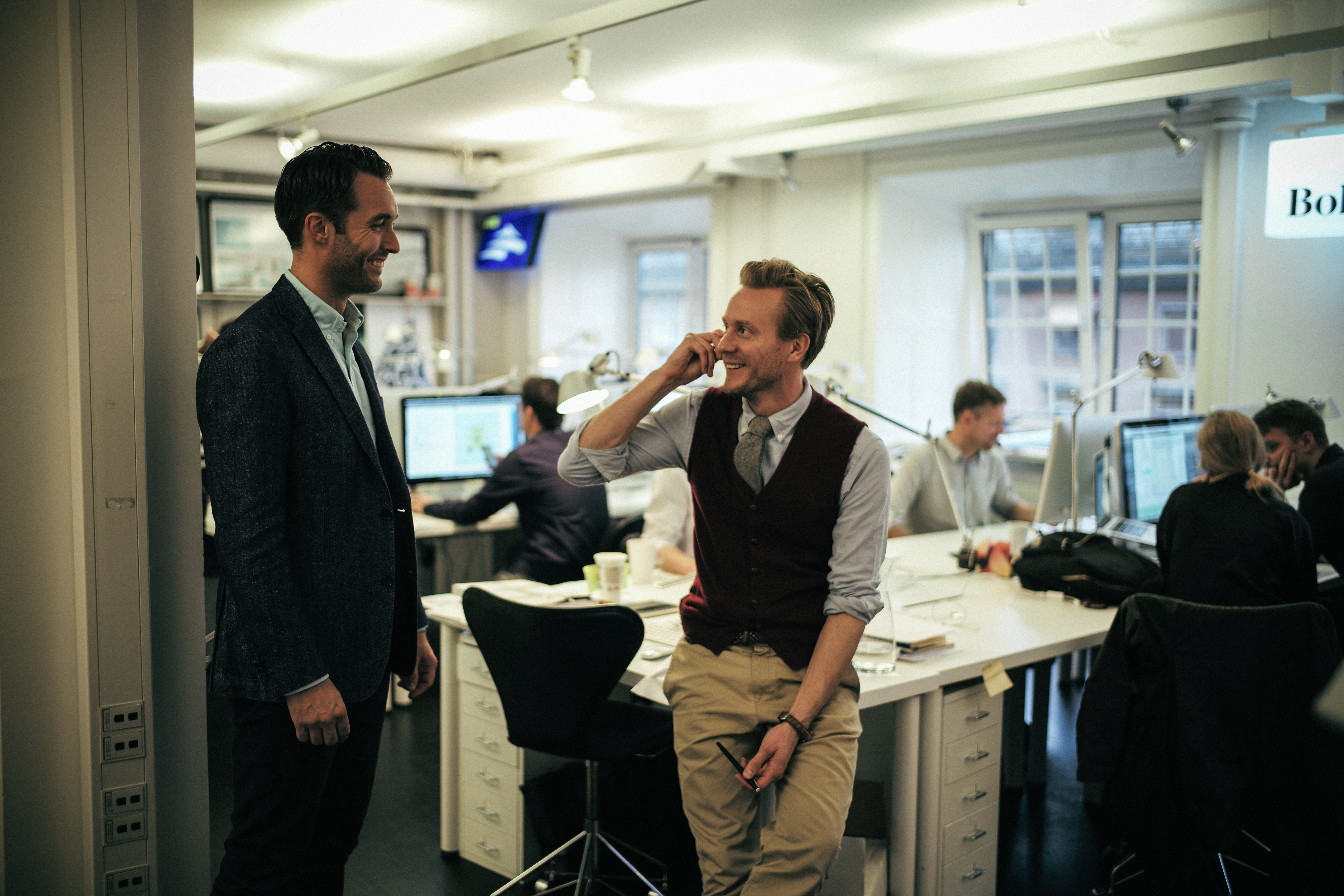
In the digital age, we are all consumers of design. Every screen we look at, every device we interact with, every message or notification has all at some point been considered, tested and designed. And yet, even as we become more data driven, great design resists automation. We can tell the difference between an object or an image rendered by algorithm and one created by an artist. But will that always be the case?
To answer that question I talked to the founders of Bold, Oskar Lübeck and Carl-Fredrik af Sandeberg.
Bold designed my new book, The Dictionary Of Dangerous Ideas. They were recently voted the best design agency in Sweden and have grown rapidly from two to 25 people in just three years. They are also part of Scandinavia’s most innovative new communications group, The North Alliance. After we finished wrapping up our project, I asked the founders, about their practice and their vision for the future of design.
How did you both meet?
Oskar: Before we met, I had previously spent many years abroad, working and studying in New York, Japan, Dubai and London. In London, I took a Masters degree in typography whilst working at Pentagram’s London office. After that I moved back to Sweden and worked for a while as a design director for The Brand Union’s Stockholm office. It didn’t take long for me to want to open my own agency. I felt that Bold should be built on a solid strategic foundation rather than just pure design, and that´s why I started looking for a partner. Carl-Fredrik was the CEO of one of the best strategy consultant agencies in Stockholm and was the perfect partner for what I was hoping to achieve.
Carl-Fredrik: It’s true - even before I was introduced to Oskar, I had been thinking about the relevance of strong visual communication and design with the strategic process. We are at a time when all decisions, even design related ones, need to be considered through the lens of data and strategy. Therefore, starting up a strategic design agency felt like the right move.
When you started Bold, what did you want to do differently than other design agencies?
Oskar: We started Bold together with one of Scandinavia’s leading advertising agencies, Åkestam Holst. Too often, you see companies with poor brand alignment between communication and design. Bold is about creating brand consistency across all channels. It has worked out really well so far and it has allowed us to win significant accounts like Scandinavian Airlines, who needed help in variety of different areas, not just design.
Carl-Fredrik: One of the important differences with our approach is the use of strategy and research to create very specific briefs for the design team. We have, together with a team of experts in brand analysis, created a way to examine what drives purchase and customer preference in different categories. Taking a data-driven approach allows us to isolate what’s important upfront for the client, before handing it over to the designers for creative execution.
Do you have a unique way of working at your agency?
Oskar: We strongly believe in shared responsibility and a flat organization. Even though we have grown quite rapidly, we still feel like one big family. Our creatives work closely with our strategists, account directors and account managers. And everyone is obsessed with staying close to the client. Dialogue is essential. Design is a profession fueled by passion, so you need to create an environment that allows passion to grow. We talk a lot and share pretty much everything with each other. I think that gives us the courage to push ourselves and our work to the max.
On this project, The Dictionary of Dangerous Ideas - what was your inspiration?
Oskar: Our design concept focused on the threshold between traditional warning signs that we have been taught to respect, and dangerous thinking that encourages us to disobey such instruction. There are a lot of striking images in the book. By interposing a strong yellow graphic element on the front cover on a black and white image of a classroom, we sought to create an emotional fission between heresy and truth, action and in-action, innovation and stagnation.
What do you think people can take away from the ideas in the book?
Oskar: As a creative person, working on the book made me realize the importance of increasing my own awareness of the broader human environment and how innovative ideas can change our surroundings in a profound way. To dare to take the initiative for change, because the right time for it is always now. Our view of the world is based on perspective. Change the perspective and you change the world.
Carl-Fredrik: As we become more digital, design only becomes more important. Design helps us find what we want and what we need. And in a world overloaded by messages and input, that is essential. Good design should be a filter that guides us and helps us simplify our lives.

